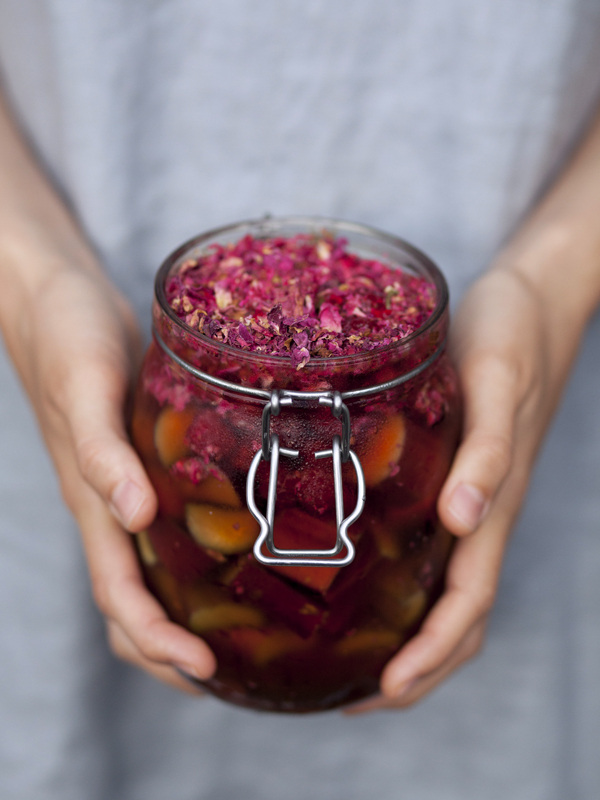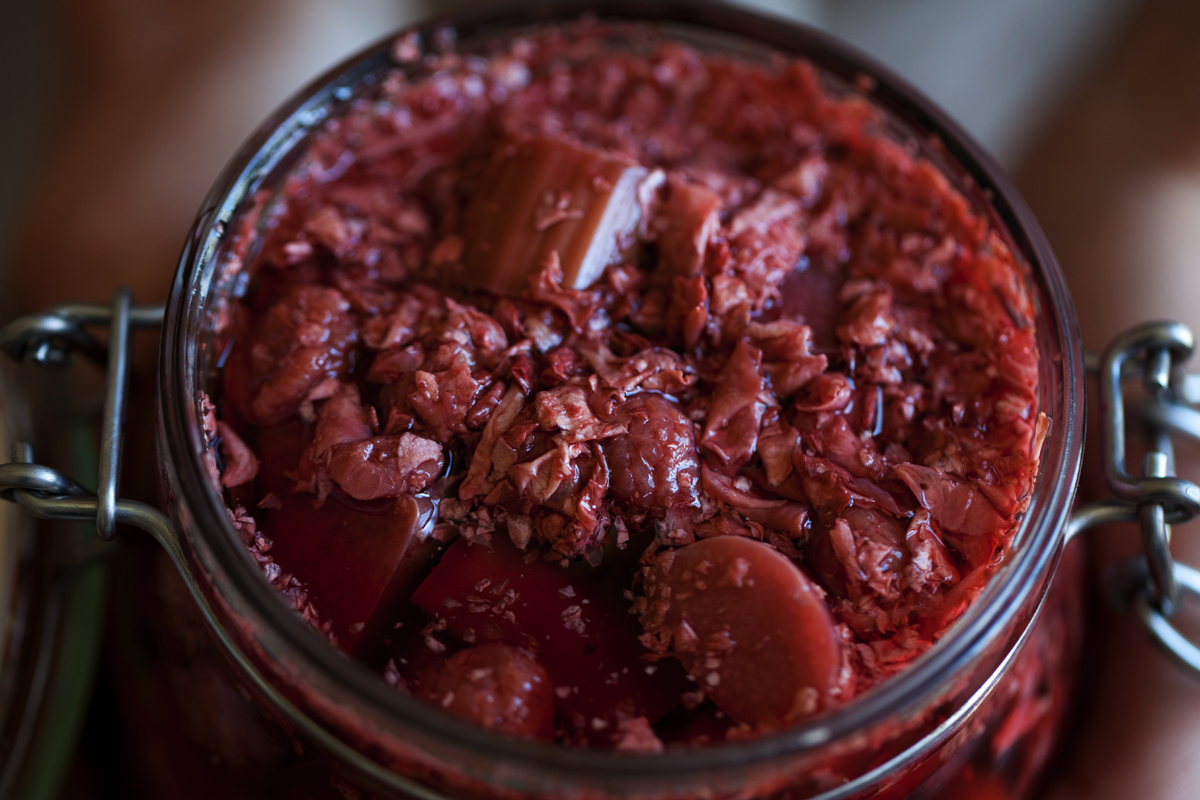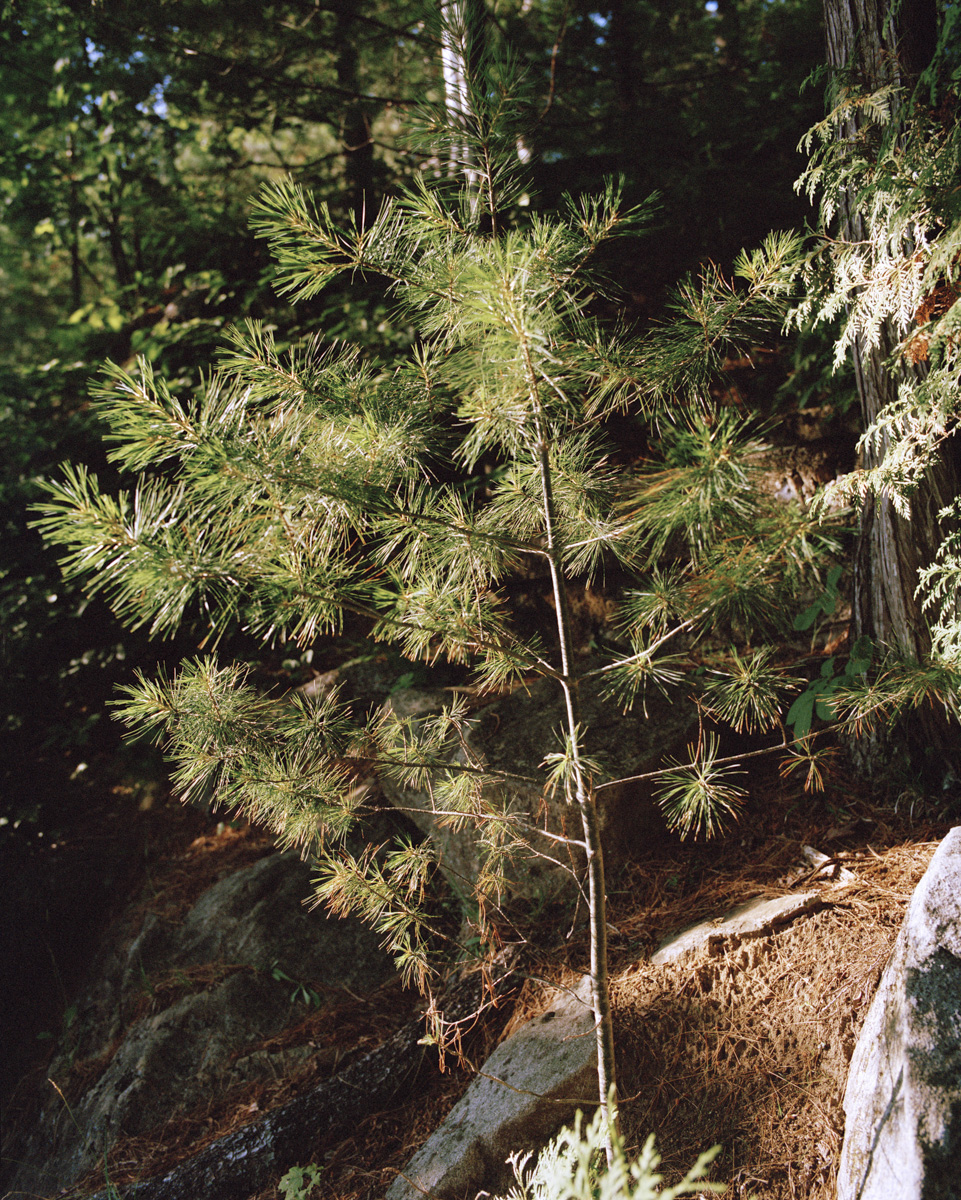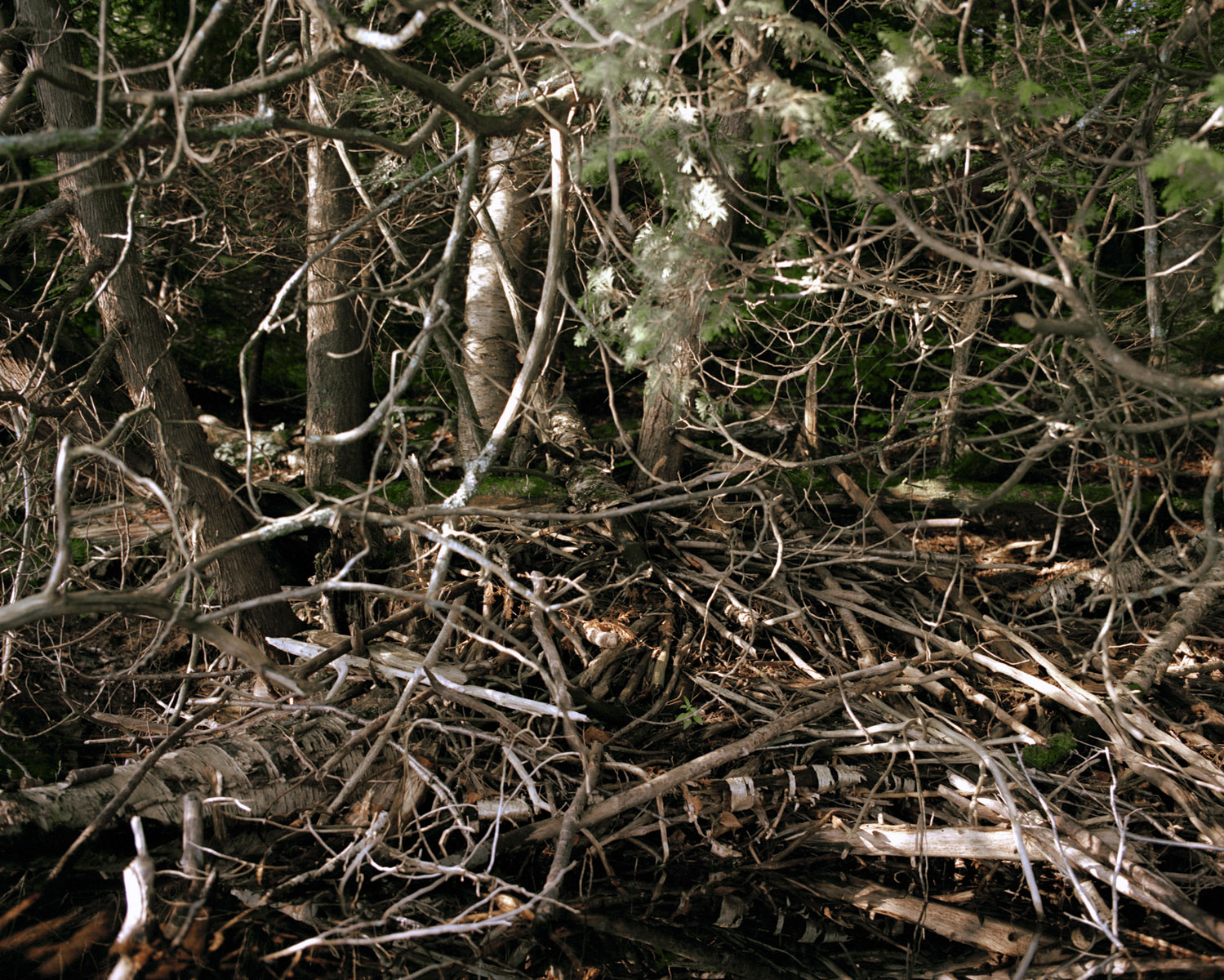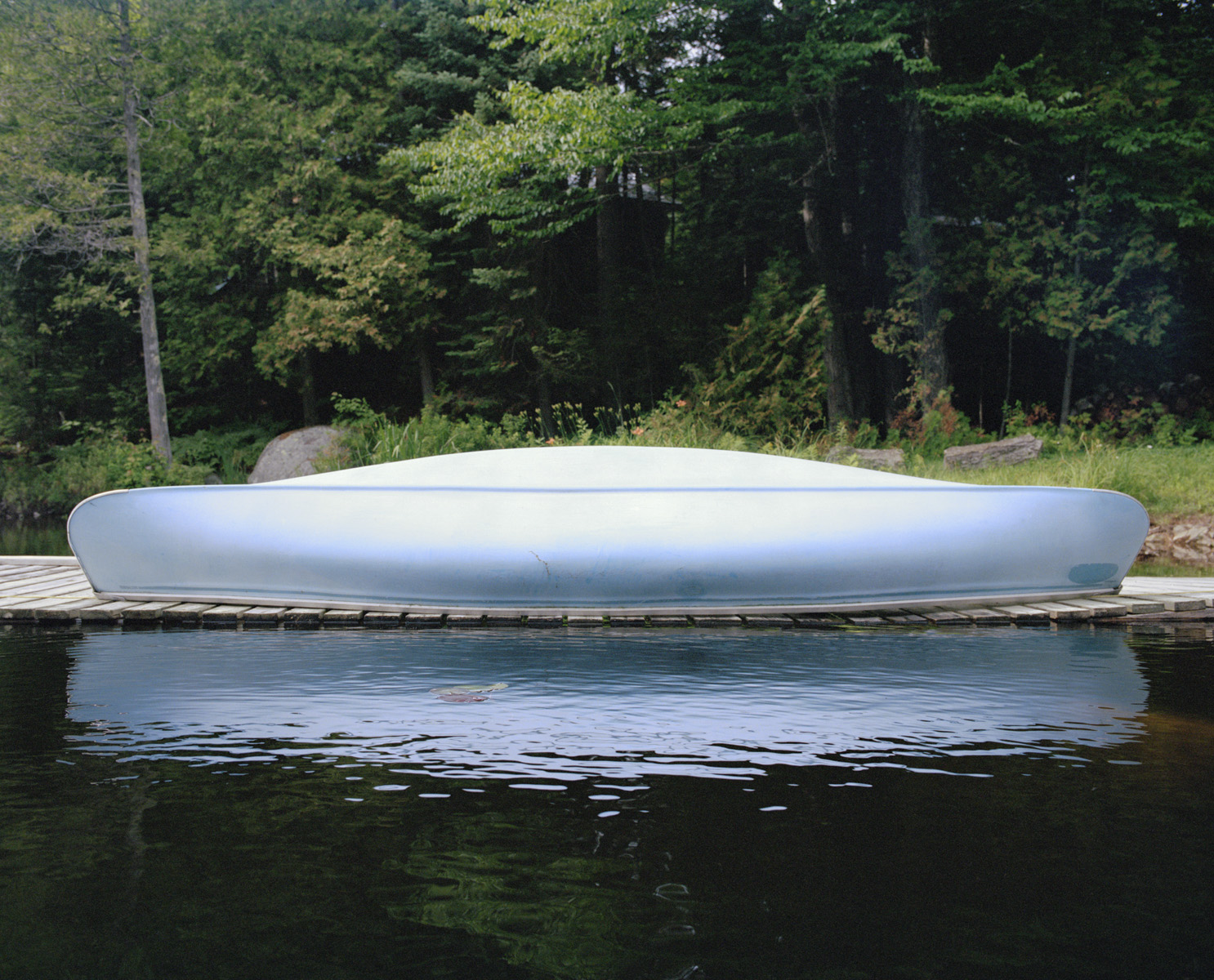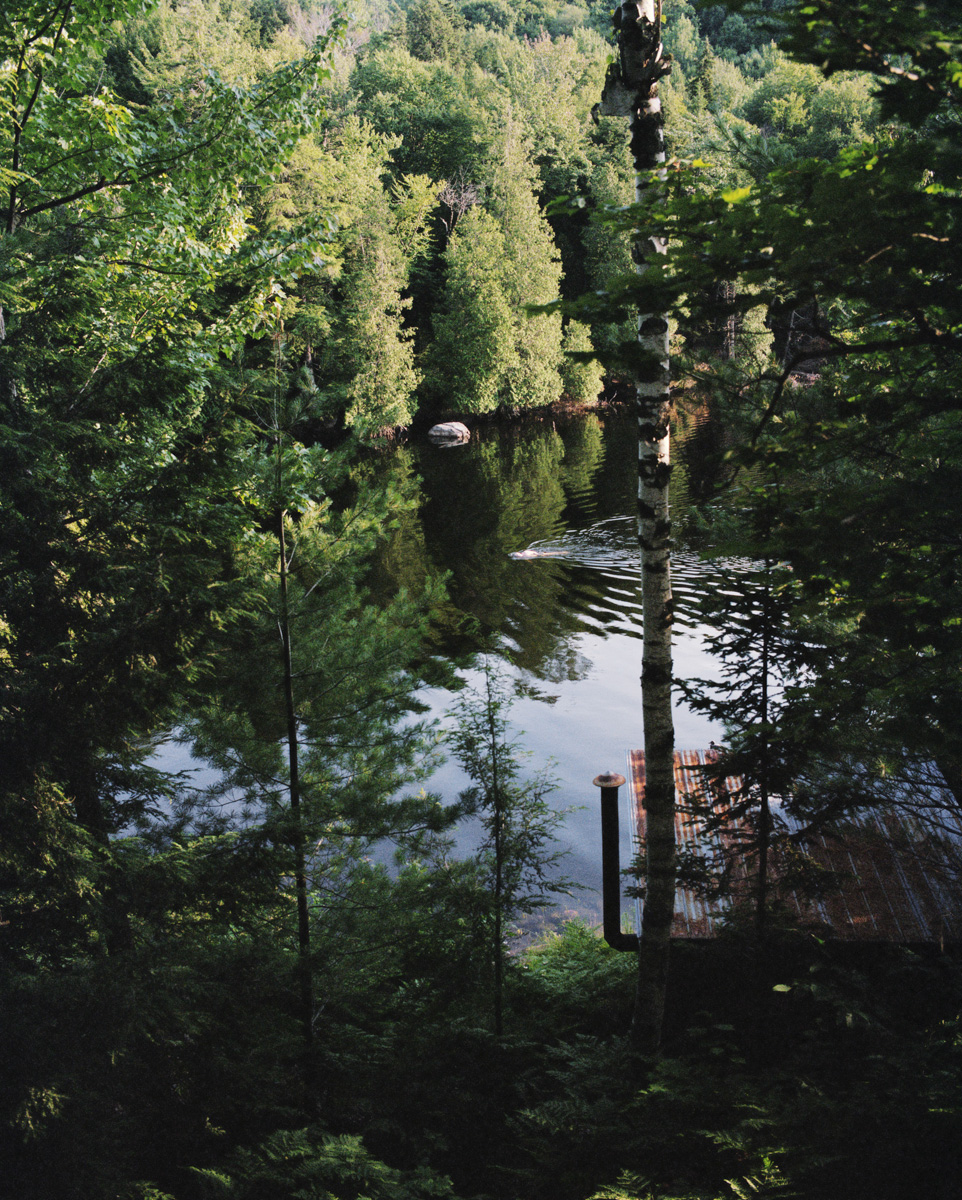A few weeks ago, while taking a long walk in the countryside w/ Lu, we stumbled upon a path bound by hedge after hedge of wild roses–punch pink, baby pink, milky-white.
Rose has been a good friend to me lately as I pry open sealed sections of heart, sort through what I unearth. Wild rose is an exceptionally strong medicine for matters of the heart, a heart tonic in fact–it restores, it supports, it soothes, it uplifts–and so you can imagine how wide my smile was when we crossed this rose-dotted path.
Lately, I’ve been drawn to the idea of everyday herbalism–finding ways to incorporate remedies as part of an already established routine. Like, the herbal bath, for instance, perfect for anyone who already tends to take frequent soaks in the tub. Or the jar of herbal vinegar, ready to be poured on salads, in stir-fries, on cooked greens.
Because if you’re already taking baths, using vinegar in the kitchen, this is not another thing to add to your daily list of things to do, but an adjustment to something you’re already doing.
And while I happen to enjoy the daily routine of making nourishing herbal infusions it’s certainly not for everyone and I’ve seen more than a few cases where this practice falls by the wayside, becomes one task too many to keep up with w/ any regularity.
And that’s okay. That’s where everyday herbalism has got you.
There are countless ways to use wild rose as an everyday herb: rose-petal honey, rose and cardamom infusion, crushed rose hips as a seasoning for pancakes, oats. A glass of rhubarb, raspberry and wild rose switchel diluted with sparkling water.
If you’re like me and are a sucker for a good, cold, carbonated beverage on a hot Summer’s day, than this herbal remedy is for you.
Switchel, or Swizzle, or Switzel, or Haymaker’s Punch
Switchel is a drink that goes by many names, my favorite being haymaker’s punch because lol. Traditionally, it’s made by combining apple cider vinegar, molasses (or maple syrup) and ginger.
Its origins are cloudy, but it’s believed to have been brought to the early American colonies via the Caribbean (which would explain the ginger), utilized by farmers (especially during the hot haying season [which would explain the alternate name]) to keep cool. Chock-full of replenishing electrolytes, it can be thought of as the OG sports drink, without all the chemically-derived coloring.
Switchel is also a wonderful digestive aid (the perfect addition to Summer BBQ) and this recipe has the additional qualities of being something of a spirit-lifter, nerve-soother, heart medicine by grace of wild rose.
This recipe was inspired by the small bottle of switchel I received in a King’s Road Apothecary surprise box. That version contained blackberries and ocotillo bark and I think I polished it off in less than a week.
The best part is that it’s incredibly simple to make. I made an economy-sized batch that should last all Summer and it took me, oh, I dunno, all of 10 minutes.
Rhubarb, Raspberry and Wild Rose Switchel
Inspired by Rebecca @ King’s Road Apothecary
Ingredients
- 2 stalks rhubarb, chopped
- 1 cup raspberries (I used frozen, but if you find fresh go wild!)
- 1 cup dried wild rose petals
- 1 big knob of ginger, sliced thin (no need to peel)
- 4 tablespoons maple syrup
- 1 liter apple cider vinegar (or enough to fill up whatever jar you’re using)
Directions
- Place all ingredients in big, lidded glass jar. Cover with apple cider vinegar and shake.
- Seal and let sit in cool, dark place for at least 2 weeks.
- Strain into clean, lidded jar and keep in the fridge.
- Add big pour to a glass of sparkling water to serve.
